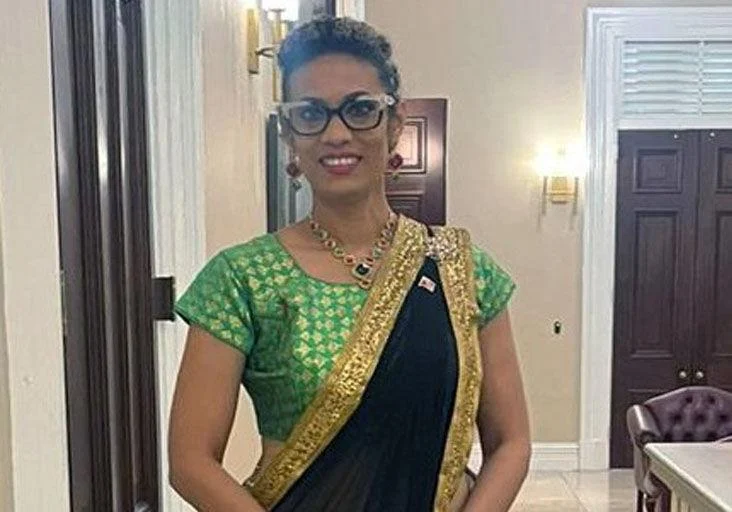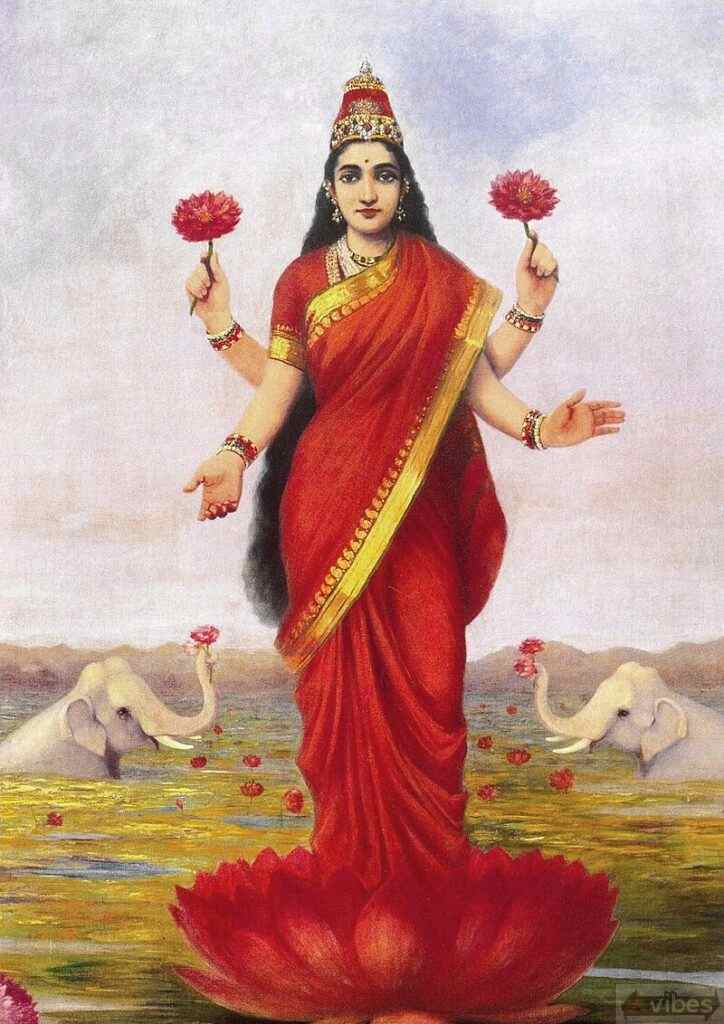By Kimberly Wallace, HER MAgazine
There is no greater signifier of Indian identity than the sari. But as timeless as it is, sometimes this cultural symbol gets wrapped up in controversy.
Without naming names, at the sitting of the Standing Finance Committee on October 17, House Speaker Bridgid Annisette-George remarked that the attire of one member was not in keeping with the rules of the House. She referred to Standing Order 53(1)(m) which states that a member present in the House during the debate “shall wear business attire”.
Present in the House of Representatives that day was St Augustine MP Khadijah Ameen, dressed in a sari and a cropped top which bared part of her midriff and sides.

In a telephone interview with Express reporter Kim Boodram, Ameen did not assume that Annisette-George’s comments were aimed at her and said she was not in breach of parliamentary rules. She said that various styles of the sari are worn by women worldwide in official places, including the Indian parliament.
That certainly piqued our interest, so we decided to research the way the sari is worn by female MPs in the Indian parliament.
An online search for the dress code for female parliamentarians in India proved futile but while looking at clip after clip of female MPs making contributions to debates in parliament (not a very fun exercise), it was clear that most, if not all, wore elegant cotton saris and quarter sleeve cholis or blouses that covered their midriff.
For years, saris have been the official dress code for female politicians in India. In fact, most influential female politicians, past and present, like the late Indira Gandhi, Sonia Gandhi, Priyanka Gandhi, Mamata Banerjee and Smriti Irani are pictured almost exclusively in sarees – again with sari blouses covering their midriff.
For these and other politicians in India, wearing the sari as opposed to western clothing is not necessarily a fashion statement, but a symbol of personal choice that also radiates political power in a patriarchal society.
Of course, baring one’s midriff in India is not taboo but one Hindu scholar told Her magazine that while there are many ways to wear the sari. The type of sari one chooses to wear should be largely influenced by the occasion and setting, therefore formal, dignified settings = formal, dignified sarees. For instance, when Indira Gandhi met former US President Harry Truman and Jacqueline Kennedy, she wore a sari with a full length sari blouse on both occasions.
And the late chief minister of Tamil Nadu, Jayaram Jayalalithaa, who had a penchant for green saris, met Hilary Clinton in 2011 dressed in her signature look with the sari styled as a robe with only her forearms exposed.

How is it possible that the sari, which is a cultural expression of the Indian diaspora, was actually one of Britain’s biggest exports? After colonisation, the sari was modified to include blouses and petticoats to satisfy British morals. Before, showing skin or breasts was considered culturally normal, explained Aashirya Anroedh, who was part of a panel of guests at the Indo-Caribbean Cultural Centre’s recent Thought Leaders forum on the Decolonisation of Indian clothing in the Diaspora.
Anroedh was born in Suriname but lives in the Netherlands; she is pursuing her MSc in Innovation at the University of Rotterdam and is passionate about fashion and Indian philosophy. Her research into the sari goes all the way back to 2800 and 1800 BC. The story of the sari begins during the Indus valley civilisation where there were different variations of clothing. The word “sari” stems from the Sanskrit word “satika” ..a clothing ensemble that included stanpatta or choli worn by men and women, the antariya or lower garment and an uttariya or head scarf.
“When you analyse old historical artifacts and accounts, the concept of wearing a blouse was actually very alien in the Indian subcontinent,” said Anroedh.
Artifacts from Hindu and Buddhist literature show that it was very normal for women and men to be bare-breasted, that was due to the availability of textiles, weather conditions and class.”
With the invasion of the Mughals, Arabs, Persians and Greeks and the development of trade and ideas, people’s attire started changing and women started incorporating long sleeved blouses and new kinds of garments into their styles. In the 17th century European colonisation started and British colonisers were keen on establishing Victorian concepts of morality. There were a lot of missionaries in India who considered nudity as a sin, Indian women were defined as seductive, sensual and exotic so the British enforced Victorian principles which meant women had to cover up with dresses, petticoats and blouses.
Long before India became the nation it is today, it was made up of competing kingdoms and empires. When the regions formed a collective nation (India), the mindset of modesty was already very entrenched. According to Anroedh, the Indian elite, middle class elite and white colonisers, initiated a reformist agenda and women were assigned a sari with a blouse as traditional wear. In paintings, Hindu female goddesses were also depicted wearing certain saris.

The social reformer Jnanadanandini Tagore’s revolutionary style of wearing the sari made her an icon for working women in India and gave saris nationwide acceptability. With the advent of Bollywood, sari styles worn by actresses turned into big trends and reached more audiences, which further influenced women’s wear. Even with the many variations of the sari, designers are finding new ways to reinvent it.
Today, Gen Z is reclaiming what was lost in Indian clothing style, wearing jhumkas (traditional Indian earrings with a bell-shaped dangler) or draping saris the way it was once done centuries ago.

Anroedh observed that the desi community on TikTok are motivating Gen Z to start wearing signifiers of their culture outside of cultural events.
“I think that’s a really nice way of reclaiming Indian clothing and women’s wear,” she added.
Here in T&T, the sari is more commonly worn at weddings, cultural and special events. Melissa Harrylal typically wears saris for special events during the month of Divali.
“There is something about wearing a sari that makes you feel more grounded and in touch with Indian culture,” she said.
While saris have been glamourised over the years, where Dr Sneha Rao’s family lives in India, saris are worn daily. Rao’s mother is very connected to the sari, her mother wore only saris – even to sleep at night. It is one of the most comfortable pieces of clothing, said Sneha, who has been tying her own sari for years.
Regardless of where it’s worn and how often it’s worn, one thing is certain: the sari will always be a way for people to connect and express their Indian identity.
